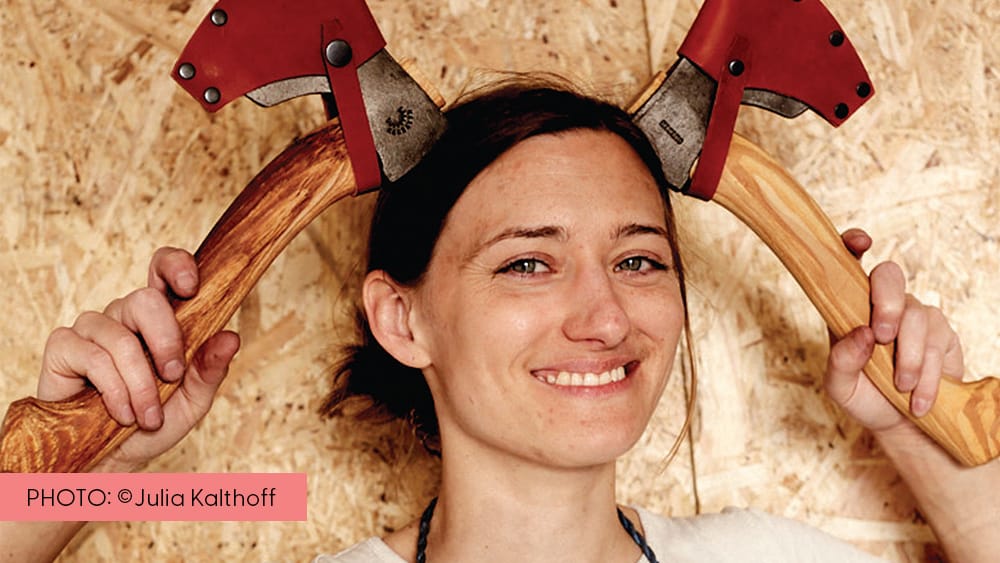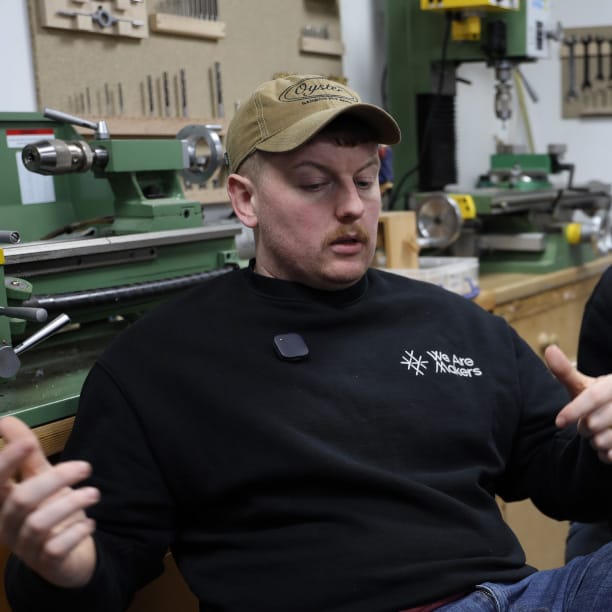Kalthoff Axes
Join Julia Kalthoff's journey in Stockholm, Sweden, crafting bespoke axes with precision. Delve into the artistry, passion, and meticulous details that define her unique approach to axe making.

Edition 4 Feature
We Interview: Julia Kalthoff
Location: Stockholm, Sweden
Photo Credit: ©Julia Kalthoff / ©Henric Lindsten @henric_lindsten /©Katja Säther @jodiekatjasaether
What is it that you do and how do you do it?
I make axes. I only make one style of axe and I make it to order, and I have done that for three years. When I designed the axe, I forged the prototypes and did all the testing myself. For the production, I am cooperating with a forge in Värmland, which makes the axe heads with me, and then I do all the details in my shop. There are many steps: grinding, polishing, removing scuffs, oiling and sawing, carving, and hanging – or assembling – the axe. Most people don’t realise it takes so many different steps to make an axe.
I’ve always been pretty nerdy with crafts. My mum had a fabric shop when I was a kid, so I always went there after school and made things out of fabric, like clothes or small dolls. I somehow just have a lot of patience to do something for a long time.
How did you get into axe making in the first place?
It started with an interest in forging. Or at least I had an idea that I would probably like forging, because you work with fire and you get all messy and sooty, and you need to use your body a lot.
I was also very fascinated by steel. I couldn’t understand how at first steel is ‘dead’ – just a square or a block, whatever you start with – and then you heat it and with your own body you can transform it into something else, some object. Once you’ve done that, the steel will stay like this for thousands of years, which is just a mind-blowing concept, I think.
So, I called a forge and asked if I could come and take a class. I had no money to pay for the class, so they allowed me to work to pay it off, and I got completely stuck into it. I thought it was wonderful, the glowing steel really just sucked me in – the intense heat makes it a very powerful experience. It’s often the case for a craftsperson that you fall in love with the material first; it speaks to you.
It was just by accident that the forge happened to be an axe forge. I took all the classes they had and worked there all summer, and that’s how I started to learn about axes, axe culture and the Swedish tradition.
It sounds like you have since developed quite a passion for the axe itself?





